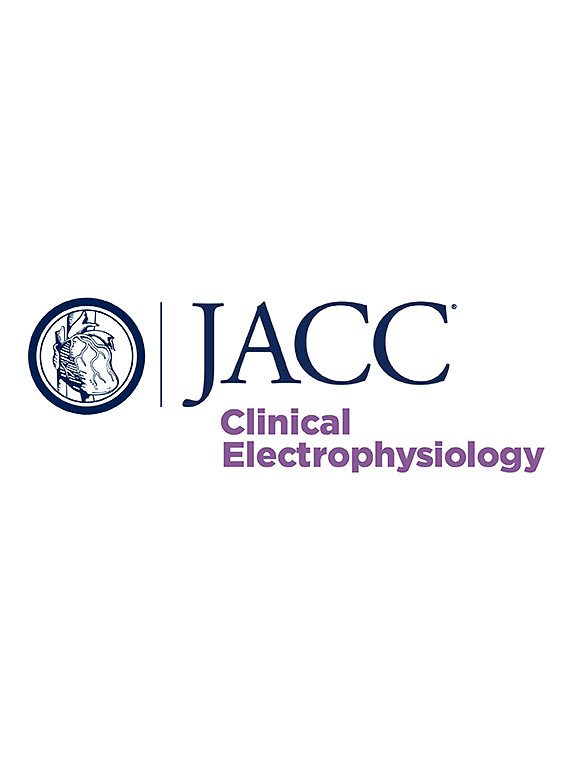Renal Outcomes of Rhythm Control in Patients Recently Diagnosed With Atrial Fibrillation
IF 8
1区 医学
Q1 CARDIAC & CARDIOVASCULAR SYSTEMS
引用次数: 0
Abstract
Background
Atrial fibrillation (AF) is associated with impaired renal function and chronic kidney disease (CKD).
Objectives
This study assessed the effects of rhythm control on renal function compared with rate control among patients recently diagnosed with AF.
Methods
A total of 20,886 patients with AF and available baseline estimated glomerular filtration rate (eGFR) data undergoing rhythm control (antiarrhythmic drugs or ablation) or rate control therapy, initiated within 1 year of AF diagnosis in 2005 to 2015, were identified from the Korean National Health Insurance Service database. The composite outcome of ≥30% decline in eGFR, acute kidney injury, kidney failure, or death from renal or cardiovascular causes was compared with the use of propensity overlap weighting between rhythm or rate control strategies in patients with or without significant CKD (eGFR <60 mL/min/1.73 m2).
Results
Of the included patients (median age 62 years, 32.7% female), 2,213 (10.6%) had eGFR <60 mL/min/1.73 m2. Among patients with significant CKD, early rhythm control, compared with rate control, was associated with a lower risk of the primary composite outcome (weighted incidence rate: 2.77 vs 3.92 per 100 person-years; weighted HR: 0.70; 95% CI: 0.52-0.95). In patients without significant CKD, there was no difference in the risk of the primary composite outcome between rhythm and rate control groups (weighted incidence rate: 3.41 vs 3.21 per 100 person-years; weighted HR: 1.06; 95% CI: 0.96-1.18). No differences in safety outcomes were found between rhythm and rate control strategies in patients without or with significant CKD.
Conclusions
Among patients with AF and CKD, early rhythm control was associated with lower risks of adverse renal outcomes than rate control was.
新近确诊的心房颤动患者节律控制对肾脏的影响
背景:心房颤动与肾功能受损和慢性肾脏病(CKD)有关:心房颤动(房颤)与肾功能受损和慢性肾病(CKD)有关:本研究评估了与心率控制相比,心律控制对新近确诊的房颤患者肾功能的影响:方法:从韩国国民健康保险服务数据库中筛选出2005年至2015年期间接受节律控制(抗心律失常药物或消融)或心率控制治疗的20886名心房颤动患者,这些患者均有估计肾小球滤过率(eGFR)基线数据。在有或无明显慢性肾功能衰竭(eGFR 2)的患者中,采用倾向重叠加权法对节律或心率控制策略的综合结果(eGFR 下降≥30%、急性肾损伤、肾衰竭或肾脏或心血管原因导致的死亡)进行了比较:在有严重慢性肾功能衰竭的患者中,与心率控制相比,早期心律控制与较低的主要综合结果风险相关(加权发病率:2.77 vs 3.92 per 100 person-years;加权 HR:0.70;95% CI:0.52-0.95)。在无明显慢性肾脏病的患者中,节律组和速率对照组的主要综合结果风险没有差异(加权发病率:每 100 人年 3.41 例与每 100 人年 3.21 例;加权 HR:0.70;95% CI:0.52-0.95):加权 HR:1.06;95% CI:0.96-1.18)。在无严重慢性肾脏病或有严重慢性肾脏病的患者中,心律控制策略和心率控制策略的安全性结果没有差异:结论:在房颤合并慢性肾脏病的患者中,早期控制心律比控制心率的不良肾功能风险更低。
本文章由计算机程序翻译,如有差异,请以英文原文为准。
求助全文
约1分钟内获得全文
求助全文
来源期刊

JACC. Clinical electrophysiology
CARDIAC & CARDIOVASCULAR SYSTEMS-
CiteScore
10.30
自引率
5.70%
发文量
250
期刊介绍:
JACC: Clinical Electrophysiology is one of a family of specialist journals launched by the renowned Journal of the American College of Cardiology (JACC). It encompasses all aspects of the epidemiology, pathogenesis, diagnosis and treatment of cardiac arrhythmias. Submissions of original research and state-of-the-art reviews from cardiology, cardiovascular surgery, neurology, outcomes research, and related fields are encouraged. Experimental and preclinical work that directly relates to diagnostic or therapeutic interventions are also encouraged. In general, case reports will not be considered for publication.
 求助内容:
求助内容: 应助结果提醒方式:
应助结果提醒方式:


